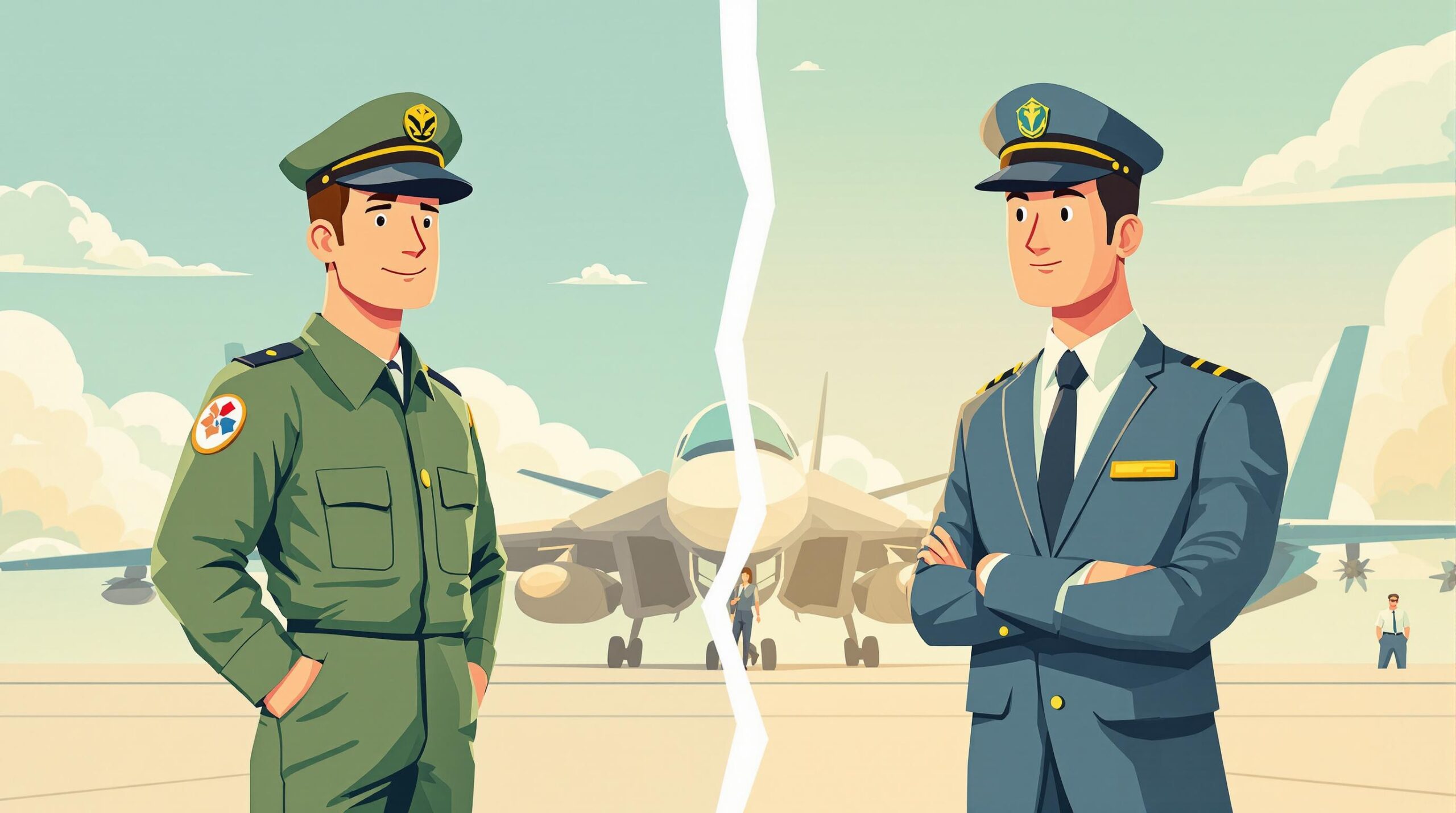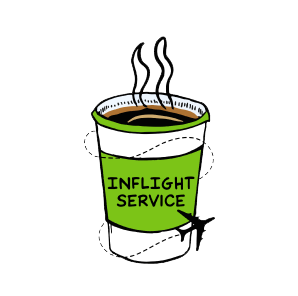- Research Companies: Know their fleet, routes, and recent news to ask smart questions.
- Polish Your Resume: Highlight flight hours, certifications, and achievements tailored to the roles you want.
- Practice Your Pitch: Prepare a concise, confident introduction showcasing your skills and career goals.
- Dress Professionally: Wear a suit in neutral colors and ensure a neat, polished look.
- Bring Essentials: Carry 15-20 resumes, business cards, certifications, and a logbook summary.
- Engage and Follow Up: Network meaningfully, ask thoughtful questions, and send thank-you emails within 24 hours.
Aviation job fairs are a great way to meet recruiters, learn industry trends, and land job opportunities. Preparation and follow-up are key to success. Let’s dive deeper into how to make the most of these events!
Job Fair Advice: How to Use Your 5 Minutes to Get an Interview
Step 1: Research and Prepare
Getting ready for an aviation job fair is crucial if you want to make a strong impression and secure interviews. Proper preparation not only helps you feel more confident but also ensures you stand out among other candidates.
Research the Companies
Dig into the details of the companies attending the fair. Look into:
- Their websites and LinkedIn profiles to understand their mission and values.
- Industry news to stay updated on trends and developments.
- Fleet types and routes if you’re targeting airlines.
- Recent achievements or announcements to show you’re informed.
This knowledge will help you ask better questions and show genuine interest.
Update Your Resume
Customize your resume to showcase your most relevant experience. Highlight key details like:
- Total flight hours and certifications.
- Technical skills that match the role.
- Quantifiable achievements, such as training success rates or operational improvements.
Consider using tools like Pilot Pathfinder to streamline the process (refer to Step 5 for more on this).
Practice Your Introduction
Create a short, impactful elevator pitch that sums up your experience and goals. Here’s a simple formula:
"I’m [Your Name], a [current role] with [specific experience/hours], looking for [desired position]. My background includes [key achievement]."
Practice delivering it confidently. Record yourself to refine your timing and clarity. When speaking to recruiters, maintain eye contact, show enthusiasm, and ask thoughtful questions about career paths or role requirements.
Once you’ve done your homework and polished your materials, focus on presenting yourself as a confident and professional candidate at the event.
Step 2: Professional Appearance
After gathering your research and materials, it’s time to focus on how you present yourself. A polished appearance can leave a lasting impression and show you’re serious about a career in aviation.
Dress to Impress
Think of the job fair as a series of interviews. Wear a clean, well-fitted suit in neutral colors like navy or charcoal. Men should opt for a classic suit, while women can choose a professional dress, skirt suit, or pantsuit. Pair your outfit with polished, dark, closed-toe shoes to complete the look.
What to Bring
Have these essentials ready in a professional portfolio or briefcase:
| Item | Why You Need It |
|---|---|
| Resumes (15-20 copies) | To share with recruiters |
| Business Cards | For quick contact sharing |
| Professional Portfolio | To organize documents and take notes |
| Logbook Summary | Reference for flight hours |
| Certifications/Licenses | Proof of your qualifications |
| A Quality Pen | For taking notes |
Stand tall, maintain eye contact, and give a firm handshake. These small details, combined with a professional appearance, can help you make a strong impression at the event.
Step 3: Engage at the Job Fair
Now that you’re dressed professionally and have your materials ready, it’s time to connect with potential employers. How you interact at the job fair can play a big role in shaping your aviation career.
Talk to Company Representatives
Approach company representatives with confidence and a clear introduction. Use this chance to ask meaningful questions, such as:
- What does a typical day look like for your pilots?
- What opportunities for growth does your company offer?
- Do you have any specific training programs for new hires?
Speak professionally and highlight your strengths. Avoid minimizing your experience – instead, frame it positively. For example, you could say, "I’m currently flight instructing and will meet your hiring requirements within six months" [2].
Be Ready for Quick Interviews
Once you’ve built a connection, recruiters may ask follow-up questions or even conduct short interviews. Use your research and resume to craft responses that stand out. Keep these tips in mind:
- Refer to your logbook summary to discuss your flight hours.
- Listen carefully, organize your thoughts, and share specific examples.
- Show interest by mentioning company initiatives you’ve researched.
If asked about your career goals or why you’re interested in their company, give specific and well-prepared answers that align with their values and plans for growth.
Every conversation is a chance to make an impression and build valuable connections.
sbb-itb-de05b1b
Step 4: Network and Follow Up
Once you’ve made a strong impression at the event, the next steps are all about staying connected and ensuring you’re remembered in the aviation industry.
Network Effectively
Focus on having meaningful conversations instead of just exchanging pleasantries at aviation job fairs. Talk about industry trends, career paths, or company-specific training programs to create genuine connections with other professionals and job seekers.
Share your contact information and connect on LinkedIn to keep the conversation going after the event. Remember, meeting people at the fair is just the beginning – following up is what transforms those introductions into real professional relationships.
Follow Up with Recruiters
What you do after the job fair can make or break your job search progress. Sending a personalized thank-you email to recruiters within 24 hours is a great way to stand out [1].
Here’s a simple follow-up plan:
- Send a thank-you email within 24 hours, mentioning specific points from your conversation.
- Update your LinkedIn profile with relevant details to reflect your professional growth.
- Engage with company updates to demonstrate your interest and awareness of industry developments [1][3].
If you’re actively applying for jobs, tools like Pilot Pathfinder can help simplify the application process while keeping your new connections engaged. Combining personal networking with smart application strategies can boost your chances of success.
Building professional relationships isn’t just about landing a job right away. Over time, these connections can offer insights, guidance, and opportunities throughout your aviation career [1][3].
Step 5: Use Tools to Streamline Job Search
After networking and staying in touch with recruiters, the right tools can make your job search faster and more effective. Modern aviation job hunting combines personal connections with smart digital solutions.
Pilot Pathfinder: Simplify Job Applications

Digital tools can save you time and effort during the application process. Pilot Pathfinder is designed specifically for aviation professionals, offering features like:
- Automated Applications: A browser plug-in that fills out airline applications automatically, cutting down on repetitive tasks.
- Secure Logbook Integration: Safely store and convert flight hours with ease.
- Accurate Data Transfer: Minimize errors with automated data entry.
Pilot Pathfinder offers a free Basic tier for essential tools like auto-fill and basic logbook integration. For $29/month, the Pro plan provides advanced features to simplify your application process even further.
Resume and Interview Preparation
Platforms for resume building and interview prep can help you stand out as a strong candidate. These tools are tailored for aviation professionals, ensuring you’re ready for job fairs and recruiter meetings.
| Feature | What It Does |
|---|---|
| Resume Builder | Helps create polished, aviation-specific resumes for job fairs. |
| Interview Tools | Prepares you for aviation-related questions, boosting confidence. |
| Logbook Analysis | Summarizes flight hours for clear, professional discussions. |
Digital interview platforms can guide you through practice questions specific to aviation, making it easier to deliver clear and confident responses. Always keep digital copies of your resume and other documents handy for quick follow-ups with recruiters.
Conclusion: Key Steps for Job Fair Success
Recap of Preparation Essentials
Taking the time to research companies, update your resume and other materials, and practice your pitch sets the stage for a productive job fair experience. A well-thought-out plan, backed by preparation and follow-up, is key to making the most of these events.
Building Long-Term Opportunities
Aviation job fairs are more than just a place to find immediate openings – they can help shape your career for years to come. Here’s how:
- Building Relationships: Thoughtful follow-ups can turn initial conversations into long-lasting professional connections.
- Leveraging Technology: Tools like Pilot Pathfinder can simplify applications and help you stay organized in your career journey.
- Gaining Insights: Every interaction offers valuable lessons that can make you a stronger candidate in the future.
Job fairs provide more than just short-term opportunities. By preparing thoroughly, networking strategically, and using the right tools, you can unlock new career possibilities. Each event allows you to expand your network, learn more about the industry, and refine how you present yourself professionally.
Success isn’t just about landing a job on the spot. The connections you make, the knowledge you gain, and the tools you use can all play a major role in shaping your aviation career. Thoughtful follow-ups, smart use of digital resources, and a commitment to learning can help turn these opportunities into lasting career growth [1].
FAQs
What to wear to a pilot job fair?
For men, a navy, dark grey, or black suit paired with a plain white dress shirt and a conservative tie is ideal. Women should opt for a suit in similar colors, matched with a white or solid-colored blouse (avoiding low necklines) and either pants or a skirt.
Captain Jenny Beatty, a Major Airline Pilot, advises: "Do NOT use the words ‘just’ or ‘only’ to downplay your pilot credentials – EVER!!!" [2]
Keep accessories simple, polish your shoes, and ensure your overall look is neat and professional. Pairing this polished appearance with a well-prepared resume and a confident introduction can leave a strong impression.




